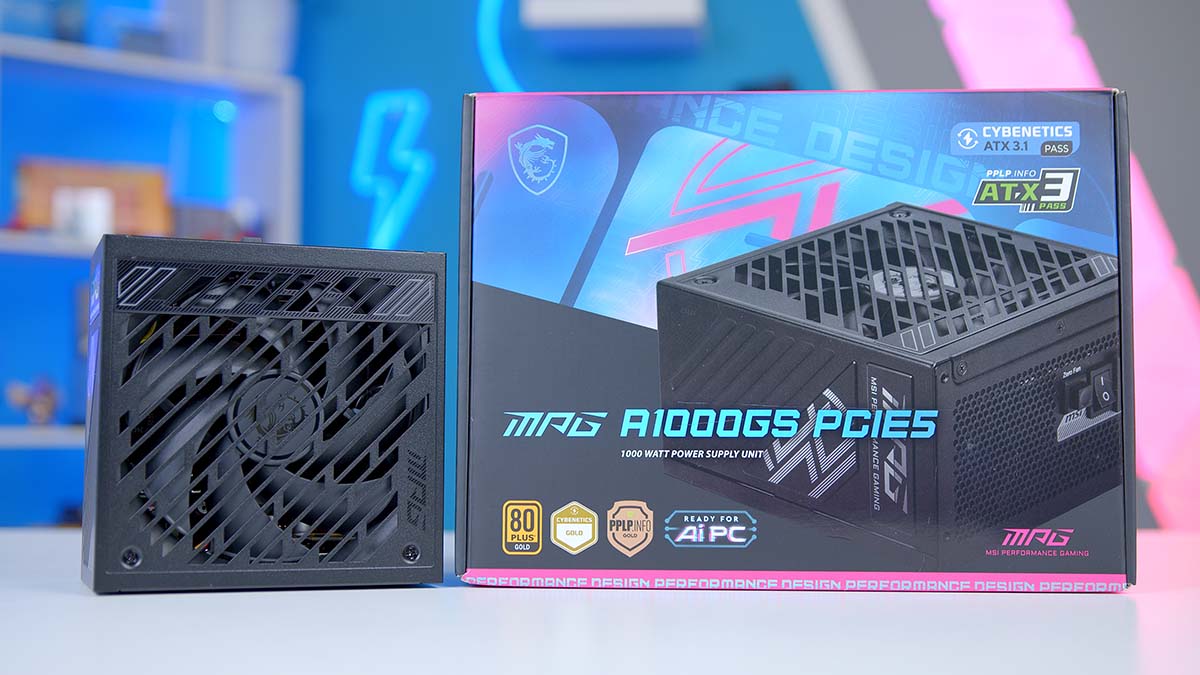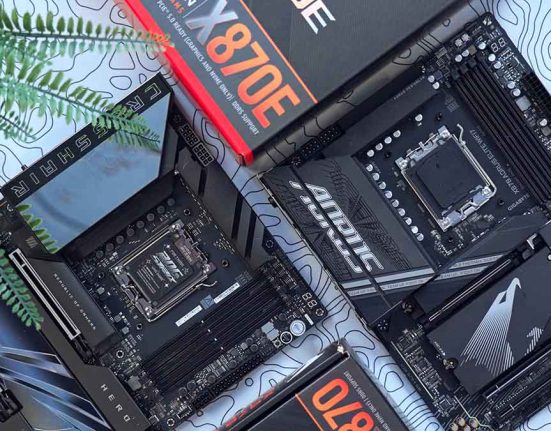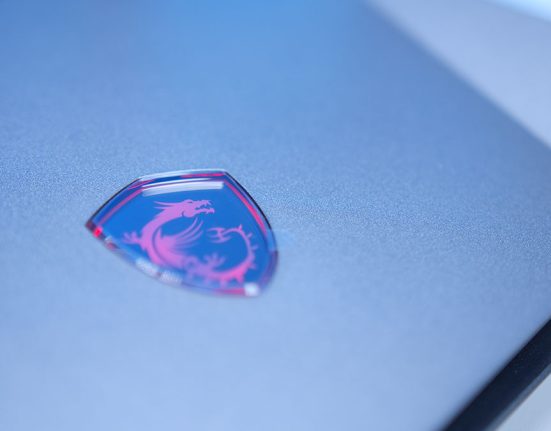The MSI MPG A1000GS PCIE5 is a modernised version of the A1000G PSU we saw a couple of years ago. Many manufacturers have begun to shift PSUs to the ATX 3.1 and PCI-E 5.1 standards, so we’re seeing older units released a couple of years ago circulate the market with some nice upgrades. This model is designed to handle the power excursions of the RTX 5000 series while offering ample connectivity for various build configurations.
One of the big questions we’re often asked with the arrival of a new graphics card range is whether you’ll need a power supply upgrade. 1000W power supplies have become more common in the current market since RTX 3000 and 4000 hit the shelves. However, now may be the time for many builders to pick up a PSU like the MSI MPG A1000GS PCIE5 to pair with an RTX 5000 graphics card.
But to determine if this power supply is worthwhile, we’ve put it through the wringer. The A1000GS PCIE5 has been built with and analysed to see if it’s a strong competitor or if its worth the rather hefty price point. This review looks at the specs, design, cable options, and features of the MSI MPG A1000GS PCIE5 to see if it’s a sold unit.
Buy the MSI MPG A1000GS PCIE5 on:
Specification
The MSI MPG A1000GS PCIE5 is fairly bog-standard when we look at its specs. This is a more traditional ATX PSU, which is 150mm long by 150mm wide. This means the A1000GS is relatively easy to handle and won’t be as heavy as a PSU like the MEG Ai16000T, which comes in at 190mm long. Because this is an ATX model, it means you won’t have any issues finding any cases that support it, as ATX is the most common form factor.

In terms of wattage, the MPG A1000GS PCIE5 provides a whopping 1000W to play around with. By today’s standards, 1000W will be more than ample for the vast majority of builders, as the only PSUs that will require a unit this powerful are the RTX 5080 and RTX 5090. However, there will be those looking to future-proof a little bit by picking up a power supply with plenty of extra wiggle room for upgrades later down the line.
Regarding its efficiency, the MPG A1000GS PCIE5 is 80 Plus Gold rated, which means it is most efficient at a 50% load. However, Cybenetics has also given it a gold rating too. More manufacturers are beginning to use Cybenetics as a way to validate efficiency, which is great to see, as we get to see the full extent of the tests that were conducted on their power supplies, which includes things like Phantom Power or efficiency across different rails, not just the 12V rail, this ensures that the PSU is efficient in its entirety.

The rest of the specs are fairly similar to the MSI MPG A1000G. This is a fully modular unit, so you can pick and choose the exact cables you need for your build, which minimises clutter and keeps everything clean. This PSU has an ATX 3.1 certification instead of ATX 3.0, which ensures the A1000GS PCIE5 can withstand high-power excursions. This includes spikes where your system wattage may peak for a short moment. If this happens, the ATX 3.1 certification means the PSU can deal with these spikes effectively without sustaining damage.
The fan in this power supply is 135mm long, providing ample airflow for your build. This fan is also assisted by the built-in Zero-Fan mode, which will turn off the PSU fan once the system load reaches a low enough point, reducing power consumption and annoying buzzing or whirring sounds. Additionally, the MPG A1000GS PCIE5 comes with a standard ten-year warranty, which is a nice value add, especially if you don’t plan on upgrading anytime soon.
| Specification | MSI MPG A1000GS PCIE5 |
|---|---|
| Size | ATX |
| PSU Dimensions (L x W x H) | 150mm x 150mm x 86mm |
| Wattage | 1000W |
| Efficiency Rating | 80 Plus Gold Cybenetics Gold |
| Modularity | Fully |
| ATX 3.1 | Yes |
| Fan Size | 135mm |
| Zero-Fan Mode | Yes |
| Warranty | 10 Years |
On the pricing front, this power supply is available, at the time of writing, for around $200, with some retailers charging less depending on where you look. I think $200 is a lot of money to spend on a PSU, that from a glance, doesn’t offer many bells and whistles. While the base set of features are good, there’s just not a lot on offer here, and you could spend a lot less on a power supply like the COUGAR GX1050 or the Vetroo 1000W. There is obviously risk to buying from alternative brands, but as someone who has used both Vetroo’s and COUGAR’s products, they’re excellent value for money.
MSI MPG A1000GS PCIE5 Design
Much like the original A1000G, this power supply has a fairly standard and plain design, which is pretty typical of most power supplies. The A1000GS is predominantly black, with a dark chassis which features some lighter MPG branding and livery around the unit. As we’ve alluded to in the specs, measuring 150mm long and 150mm wide, the MSI MPG A1000GS is a fairly standard size power supply, it isn’t too weighty, and because of its dimensions it won’t have any issues fitting into the majority of modern cases.

On the top of the power supply, you’ll be able to spot plenty of ventilation with a 135mm fan peeking through, providing plenty of airflow for the unit. The sides of the chassis feature some MSI branding, providing a different to look that isn’t just black. Ultimately, the sides are likely to be obscured however, once the PSU is installed inside your case.

The front of this unit features more ventilation to assist airflow, along with a kettle lead port and a Zero-Fan button. This can be toggled on or off to utilise the Zero-Fan mode which will switch off the fan once the PSU load sits at 40% or below. At the rear are all of the various spots for the power connectors. This power supply has space for nine headers, three SATA/Molex, one motherboard power (split into two), three CPU/PCI-E, and two 16-pin GPU headers. This will be ample for most builders, but I can foresee the three CPU/PCI-E headers being an issue if you’re using Corsair iCUE components, which require PCI-E to be powered.

Rounding off this section, the design is fine. I don’t think there’s anything particularly unique or enticing about the design or look, MSI has gone for more practicality over form, which is understandable as most power supplies will be installed and then forgotten about.
Power Connectors
24-Pin Motherboard Power Cable
First off is the 24-pin motherboard power cable. All power supplies come with this as standard, so it isn’t a surprise to see it with the MPG A1000GS PCIE5. The headers that plug into the PSU are split into two, and this is to provide better power delivery, which is ideal if you’re overclocking.

8-Pin EPS CPU Cable
This power supply features three headers for CPU power or PCI-E, which may be a limiting factor if you’re building a system with Corsair iCUE LINK fans. The vast majority of modern motherboards use at least two headers to power the CPU, either in an 8+8 configuration, or 8+4, which means these headers will be taken up very quickly by your build.

8-Pin PCI-E GPU Cable
With NVIDIA shifting over the RTX 5000 series to only use 16-pin power, 8-pin PCI-E is primarily limited to AMD users. However, if you do have an AMD graphics card, you’ll be stuck with a pig-tail-style GPU connector, as there likely won’t be enough room for individual cables due to CPU space taking up the other headers.

16-Pin GPU Cable
It’s nice to see the use of two 16-pin graphics cards cables, as this was thought to be reserved just for super high wattage systems. While I’m appreciative of the fact that MSI are catering to dual-GPU builders, not offering an adapter to PCI-E through 16-pin is a weakness, especially if you’re looking to just use individual cables for components like your graphics card.

SATA Power Cable
SATA power is primarily used for a couple of things, powering RGB hubs and SATA-based drives. Cases like the Montech King 95 Pro come with an integrated SATA and fan hub, and require two SATA cables to power it. These cables are friction fit and snap together very easily.

Molex Power Cable
As I’ve mentioned in other articles, Molex is a fairly old connector and isn’t commonly used anymore, but power supply manufacturers include it just in case. Molex is typically used for fans, but there are also older CD/DVD drives that are powered by Molex.

Features We Like
Dual-Color 16-Pin Cable
One of the unique qualities of this power supply is that the 16-pin GPU power cables feature yellow-tipped ends. MSI does this so that you can see if the cables are seated correctly, minimising the risk of user error.

Zero-Fan Mode Is Easy to Access
The zero-fan mode on this power supply is incredibly easy to locate and use. On the rear of the PSU is a small button for the zero-fan setting which toggles it on and off. This is definitely worth using if you’re looking to mimise noise levels across your build.

Features We Don’t Like
Only 3 CPU/PCI-E Headers
One of the more obvious limitations of this power supply is the overall lack of connectors for PCI-E and CPU. This becomes an immediate problem for anyone using more than three cables, which is highly possible if you’re got a particularly high-end graphics card, or you’re using any extra components that are powered by PCI-E.

Conclusion
MSI MPG A1000GS PCIE5
Product Name: MPG A1000GS PCIE5
Brand: MSI
-
Features
-
Design
-
Efficiency
-
Value For Money
Summary
The MSI MPG A1000GS PCIE5 is a decent power supply with a reasonably similar design to its predecessor, the A1000G. The A1000GS offers a few extra features, such as the yellow-tipped 16-pin power connector, integrated cable management combs, and an upgrade to ATX 3.1 and PCI-E 5.1 certifications. However, this unit remains mostly the same as the A1000G.
This immediately puts into question the value, as for many (especially if you can find it cheaper), it may be worth picking up the older unit as it’s still perfectly ample for the vast majority of builders. Additionally, we can foresee the lack of CPU/PCI-E connector space causing an issue if you’re using additional components that require PCI-E components. If you’re looking for a 1000W power supply, there are cheaper and more bountiful options out there, but the A1000GS PCIE5 is worth considering if you’ve got a bit of extra cash to spend.
Pros
✅ Gold efficiency ratings
✅ Minimises user error
✅ Clean cable design
Cons
❌ Expensive
❌ Limited CPU/PCI-E space
❌ Very similar to original A1000G








